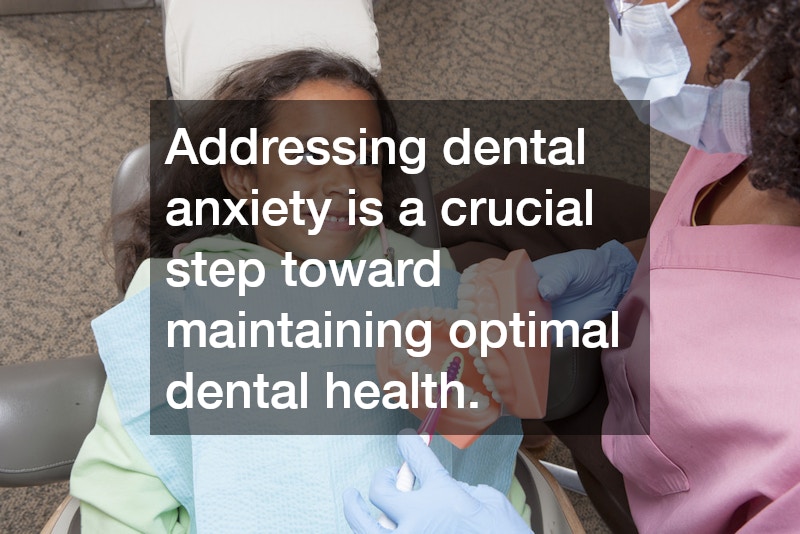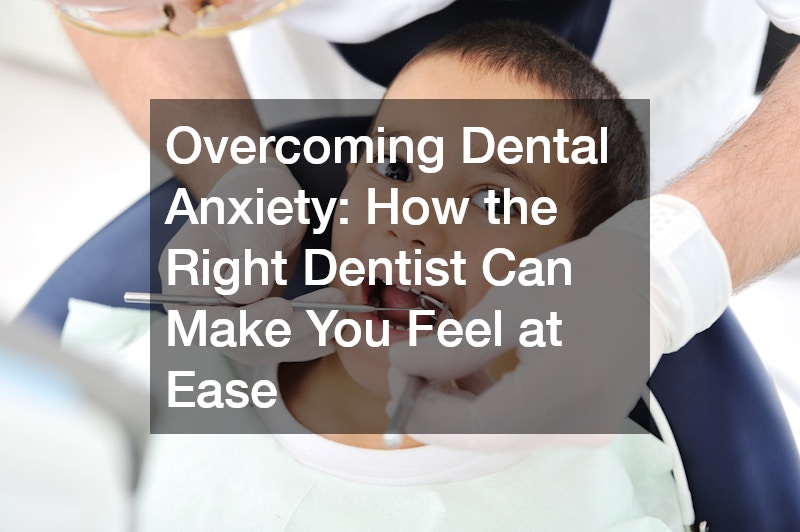Overcoming Dental Anxiety How the Right Dentist Can Make You Feel at Ease
Overcoming Dental Anxiety: How the Right Dentist Can Make You Feel at Ease
Millions of people worldwide suffer from dental anxiety, a condition that can make even routine dental visits nerve-wracking. Understanding the root causes of this anxiety and finding the right dental professional is crucial for overcoming these fears and ensuring regular dental care.
What Causes Dental Anxiety and How Can It Be Identified?
Understanding the Triggers of Dental Anxiety
Dental anxiety often stems from past negative experiences, whether due to painful procedures or impersonal care. Additionally, the fear of pain and needles can exacerbate apprehension, making prospective visits especially daunting.
This anxiety can also be linked to feelings of vulnerability and loss of control, as patients may feel helpless while in the dentist’s chair. Recognizing these triggers can assist in addressing the root of the anxiety effectively.
Acknowledging these fears is the first step; by understanding the specific triggers, individuals can better communicate their concerns to dental professionals. With this knowledge, strategies can be implemented to tackle these fears head-on.
Signs and Symptoms of Dental Anxiety
Common symptoms of dental anxiety include physical signs such as sweating and a racing heart. Emotional distress is also prevalent, often manifesting as restlessness or a strong aversion to dental appointments.
Individuals with dental anxiety might experience significant distress at the mere thought of a dental visit, leading to avoidance behaviors. This can result in postponed or canceled appointments, exacerbating dental health issues.
Recognizing these signs early can pave the way for seeking appropriate help and managing anxiety more effectively. Awareness of these symptoms can also guide patients in communicating their state of mind to their dentist.
How Can the Right Dentist Help Ease Dental Anxiety?
Building Trust and Communication
The foundation of a positive dental experience often lies in the dentist-patient relationship. Open communication and empathy are paramount, as these elements help in building trust and easing fears.
A compassionate dentist takes the time to understand the patient’s unique triggers and concerns, fostering a supportive atmosphere. Effective communication also involves explaining procedures in detail to help demystify the dental experience.
When patients feel heard and understood, their anxiety can diminish significantly. A trustworthy dentist can transform a dreaded visit into a manageable experience by utilizing empathy and strong communication.
Comfortable and Patient-Friendly Environment
A dental clinic’s ambiance plays a crucial role in mitigating anxiety, with soothing colors, calming music, and comfortable waiting areas. Patient-centered services, such as gentle techniques and consideration of individual needs, are essential.
Modern dental practice focuses on patient comfort, employing advanced techniques to ensure minimal pain and discomfort. This approach not only eases anxiety but also enhances the overall healthcare experience.
By prioritizing a welcoming environment, dental practices can make significant strides in addressing and reducing dental anxiety. A focus on comfort and patient care can redefine what patients expect from their dentist visits.
What Techniques and Strategies Can Be Used to Manage Dental Anxiety?
Pre-Appointment Strategies
Preparation is key to reducing anxiety before a dental appointment. Simple strategies like scheduling appointments in the morning can help, as they prevent extended periods of anticipation that can heighten anxiety.
Bringing a friend or family member to the appointment can provide additional emotional support and act as a comforting presence in the waiting room. Practicing relaxation techniques such as deep breathing or visualization before the appointment can offer a sense of calm.
These strategies can empower patients to take control of their anxiety, ensuring they are in a more relaxed state before meeting the dentist. Addressing anxiety before the appointment sets a positive tone for the experience.
On-Site Anxiety Management Techniques
During the appointment, practical techniques can further alleviate anxiety. Sedation dentistry is one such method, offering various levels of sedation that range from mild relaxation to general anesthesia.
Distraction methods, such as listening to music or watching videos, can also shift focus away from the procedure and provide peace of mind. Guided visualizations, where the dentist helps patients imagine calming scenes, can similarly reduce stress.
Overall, these on-site techniques are invaluable for managing anxiety as they provide immediate relief. Implementing such strategies empowers patients to undergo necessary dental care with confidence and ease.
Conclusion
Addressing dental anxiety is a crucial step toward maintaining optimal dental health. Choosing the right dentist, who employs empathic techniques and ensures patient comfort, is essential in managing and overcoming these fears.
By understanding the triggers, recognizing the signs, and employing effective strategies, patients can transform their dental care experience. A supportive and professional dental team can make visits a positive and stress-free part of health maintenance.





Post Comment